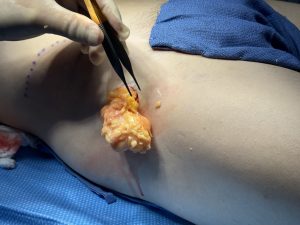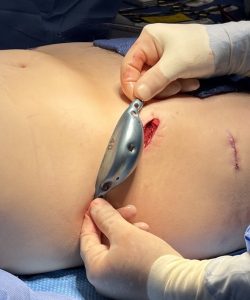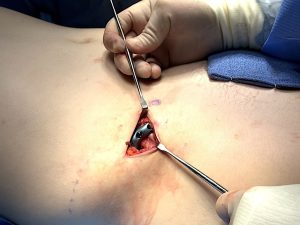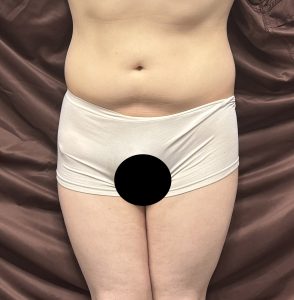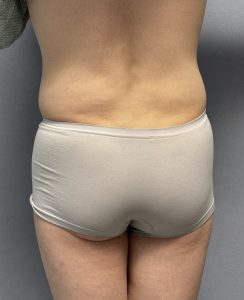Background: Hip augmentation is one of the last aesthetic body contouring areas to be more fully developed. Past and current efforts have looked at how the hips are perceived in many females where there is a relationship between the buttocks and the hip at both the anatomic and aesthetic levels. BBL surgery has brought the hip area into focus as the transfer of fat offers a convenient method of augmentation to do so. Hip implants offer an alternative to fat and the pocket location has met with variable clinical success rates.
But the aesthetic anatomy of the hips is comprised of more than merely an area just above the thighs. The hips are actually composed of three aesthetic zones starting superiorly at the iliac crest (I), the subiliac or hip dip area between the iliac crest and the protrusion of the greater trochanter of the femur (II) and the upper thigh. (III) Traditional hip augmentation focuses on zones II and III as most females have an adequate pelvic bone width. (Zone 1 or iliac crest) As a result hip implants to date have been soft tissue based for zones 2 and 3 and uses silicone-based materials.
One type of hip deficiency is the lack of adequate pelvic bone width. It is well known that men and women have different pelvic shapes. Females have larger and wider pelves due to a rounder pelvic inlet. In men the iliac crests are positioned higher giving them a more narrow and taller pelvis. Lack of adequate pelvic width is seen in some cis-females that have a straight shape with no curves. It is also seen in transfemales who genetically have a narrow pelvis and want more curves.
Until recently there has been no method to aesthetically increase pelvic bony width. But an iliac crest implant now exists that attaches to the iliac crest to widen it. Given its lateral position firm fixation to the iliac crest is needed. While effective at increasing pelvic width this only affects the upper 1/3 of the hip area and, when done alone, can accentuate hip dips or the sub iliac hip area. For this reason the addition of a hip dip implant underneath the iliac crest is often needed.
Case Study: This transfemale patient desired widening of her pelvic bones. She had a slight hip dip below the crest and an abdominal roll above the crest While ultimately circumferential liposuction would be desired she elected to defer that procedure until after the pelvic widening.
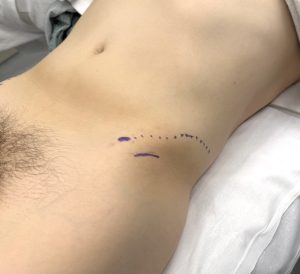
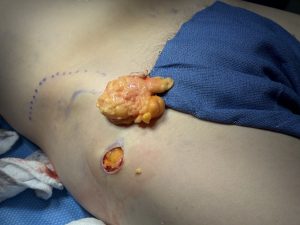
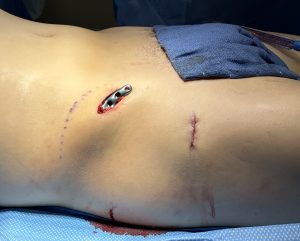
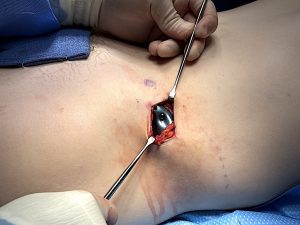
A hooked style silicone hip dip implant was placed underneath the titanium iliac crest plate on each side to treat the accentuated hip dip indentation. The upper maximum projection of the silicone implant was 2 cms.
Drains were placed and the incisions closed in multiple layers with dissolvable sutures and taped. An above the knee compression girdle was applied.

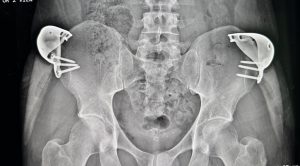
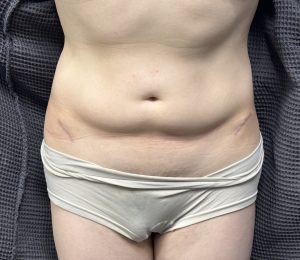
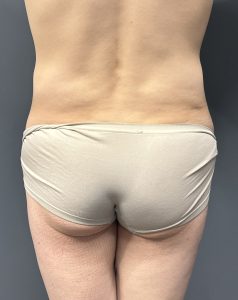
Increasing pelvic bone width at the upper portion of the hips with a titanium plate on the side of the iliac crest is an effective procedure. It works ideally in patients with good BMIs (body mass index) where the increase in the wing of the ilium could be more clearly seen. But regardless of the increase in pelvic width there will be a concomitant increase in the depth of the subiliac area known as the hip dip. It takes a silicone hip style implant to fill this dip and how well it integrates or fits to the iliac plate ism important to prevent a noticeable step off between the two implants. The best approach to now to achieve that effect was a hooked silicone implant style that fits up into the hollow of the metal plate.
Key Points:
1) One type of hip augmentation is skeletally based which involves expanding the lateral border of the iliac crest.
2) A titanium metal iliac plate is fixed to the iliac crest through an anterior approach to widen the widen the most lateral aspect of the pelvic bone.
3) A silicone implant fixed to the underside of the iliac plate prevents deepening of the hip dip area and allows for a better transition between the upper augmented hip into the lower non-bony hip area.
Dr. Barry Eppley
World-Renowned Plastic Surgeon




